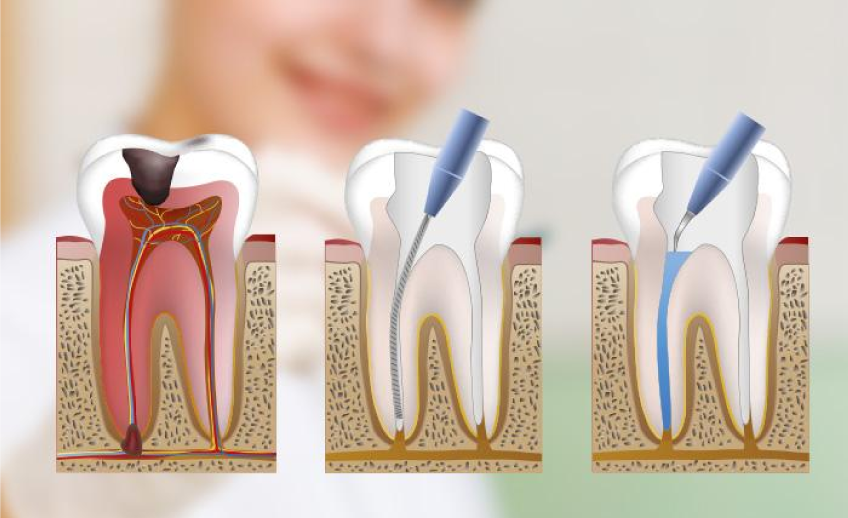Protect Your Teeth From Further Damage
Restore Strength, Comfort, and Confidence to Your Smile
When a tooth is damaged due to decay, injury, or wear and tear, it can affect not just your smile but also your ability to eat and speak comfortably. Restorative dentistry focuses on repairing these issues, restoring both function and aesthetics. By addressing dental problems early, you can prevent further complications and maintain a healthy, confident smile.
At Precision Dental & Implant Centre, our solutions for restorative dentistry in Kolkata offers dental repair, delicate dental restoration, to structural support based on individual needs.
Restorative Dentistry in Kolkata— Treatments We Do
RESTORATIVE DENTISTRY
Tooth-Coloured Fillings
Tooth fillings — To repair cavities caused by decay and restore tooth structure.
The majority of patients today prefer tooth-coloured composite fillings when treating a new cavity. White fillings are made from composite resin, and are a safe, aesthetic, durable alternative to traditional silver fillings.
Benefits:
- Provides a strong and invisible repair for cavities or minor fractures.
- Matches the natural tooth shade for a flawless look
- Bonds directly to the tooth for added strength
- Minimally invasive with less removal of healthy enamel
- Long-lasting and mercury-free
Unlike traditional fillings, they blend seamlessly with the natural teeth and are almost invisible & aesthetically pleasing.


RESTORATIVE DENTISTRY
Single/Multiple Sitting Root Canal Treatment
Single/Multiple Sitting Root Canal Therapy — To save your natural tooth while alleviating pain.
A root canal treatment (RCT) is performed to repair a tooth that has suffered severe decay or infection. The nerve and pulp are taken out during a root canal operation, and the inside of the tooth is cleaned and sealed.
Benefits:
- Eliminates pain and infection
- Preserves your natural tooth
- Restores full function and aesthetics
- depending on the severity of infection.
It can be done in single or multiple sittings. Our root canal specialist in Kolkata decides the best possible option
How a Root Canal Treatment Works
- In order to examine your diseased tooth, you must first have an x-ray taken.
- Local anesthesia given for complete comfort.
- The afflicted tooth is then enclosed in a rubber sheet to keep the area dry.
- Removal of infected tissue and cleaning of the canals. The debris is periodically flushed away using sodium hypochlorite or water.
- Filling the canals with gutta-percha (a biocompatible material)
- Before sealing the tooth, disinfectant solutions are applied.
- Final restoration with a crown for protection and strength
If the procedure is not finished, a temporary filling is placed in the tooth’s external hole to keep food and saliva out. The subsequent appointment occurs when the permanent filling is completed.

RESTORATIVE DENTISTRY
Inlays & Onlays
Inlays and Onlays — A custom restoration for moderately damaged teeth.
Inlays and onlays are custom-made restorations fabricated in a dental lab. As part of restorative dentistry in Kolkata, they are often recommended when a cavity is too large for a regular filling. It doesn’t require a full crown and is bonded securely to the tooth for long-lasting results.
Advantages:
- Preserve more of the natural tooth structure
- Provide superior durability and strength
- Offer an excellent fit and natural appearance
- Made from materials like porcelain, resin, or gold
These restorations help restore function while maintaining the tooth’s natural look and feel.
RESTORATIVE DENTISTRY
Crowns and bridges
Crowns and bridges — A classic procedure to restore missing teeth; strengthen, shape, and improve functional eating abilities.
Dental crowns are caps that are fitted to broken, damaged, or weakened teeth. When fillings are ineffective, crowns are applied to protect, cover, and restore the contour of your teeth.
Materials that are used for crowns:
- Metal
- Porcelain
- Ceramic
- Composite Resin
- Zirconia
- Metal-ceramic combinations
Factors Considered When Choosing a Crown:
- Tooth location and visibility when smiling
- Function and bite pressure
- Gum health and surrounding tooth color
- Amount of natural tooth remaining
Once fitted, crowns require only good oral hygiene and regular checkups to last many years.

RESTORATIVE DENTISTRY
Post & Core
Post & Core— A Support for Your Jaw Bone
When a tooth has lost most of its structure after a root canal, a post and core procedure provides stability and support for a dental crown.
How It Works:
- A small post is placed into the cleaned root canal
- A core buildup material is used to rebuild the tooth’s missing structure
- A dental crown is then placed over it for full protection
Benefits:
- Strengthens weakened teeth
- Ensures proper crown support and alignment
- Extends the life of the treated tooth
This technique restores both the function and durability of severely damaged teeth.

RESTORATIVE DENTISTRY
Post & Core
Following a root canal, the dental restorative procedure known as post and core may be used. A dental crown can be kept in place with the help of a post and core when a sizable amount of a tooth’s structure has been removed.


RESTORATIVE DENTISTRY
Full Mouth Rehabilitation
Full-mouth rehabilitation — Comprehensive restorative care designed for seniors
A full mouth rehabilitation uses a variety of restorative dentistry procedures to repair or totally reconstruct a smile (both upper & lower jaw). It’s ideal if you suffer from extensive decay, multiple missing teeth, worn enamel, or bite issues.
Goals:
- Restore chewing ability (bite alignment)
- Improve speech and oral health
- Recreate a balanced, youthful smile
Treatment May Include:
- Crowns and bridges
- Dental Implants
- Veneers
- Inlays and Onlays
- Root Canal Treatment
Also known as full mouth restoration, the treatment combines aesthetics with function for a quality of life.
Benefits of Choosing Precision Dental for Restorative Dentistry in Kolkata
Advanced technologies such as digital imaging and dental microscopes help us deliver precise, minimally invasive treatments.
- Expert dentists with extensive experience in restorative procedures
- Advanced diagnostic tools for accurate treatment planning
- Gentle, patient-focused care to minimize discomfort
- Durable, high-quality materials for natural-looking, long-lasting results
- Coordination with preventive and cosmetic treatments for holistic oral health
At our dental clinic in Kolkata, restorative dentistry is performed with other areas of care, including preventive dentistry, implant dentistry, and prosthetics. This integrated approach ensures that your teeth are not only repaired, but also maintained for the long run.
Restore Function, Health, and a Beautiful Smile
Don’t let damaged teeth affect your quality of life. Book your appointment at Precision Dental & Implant Centre today and regain your radiant smile.

